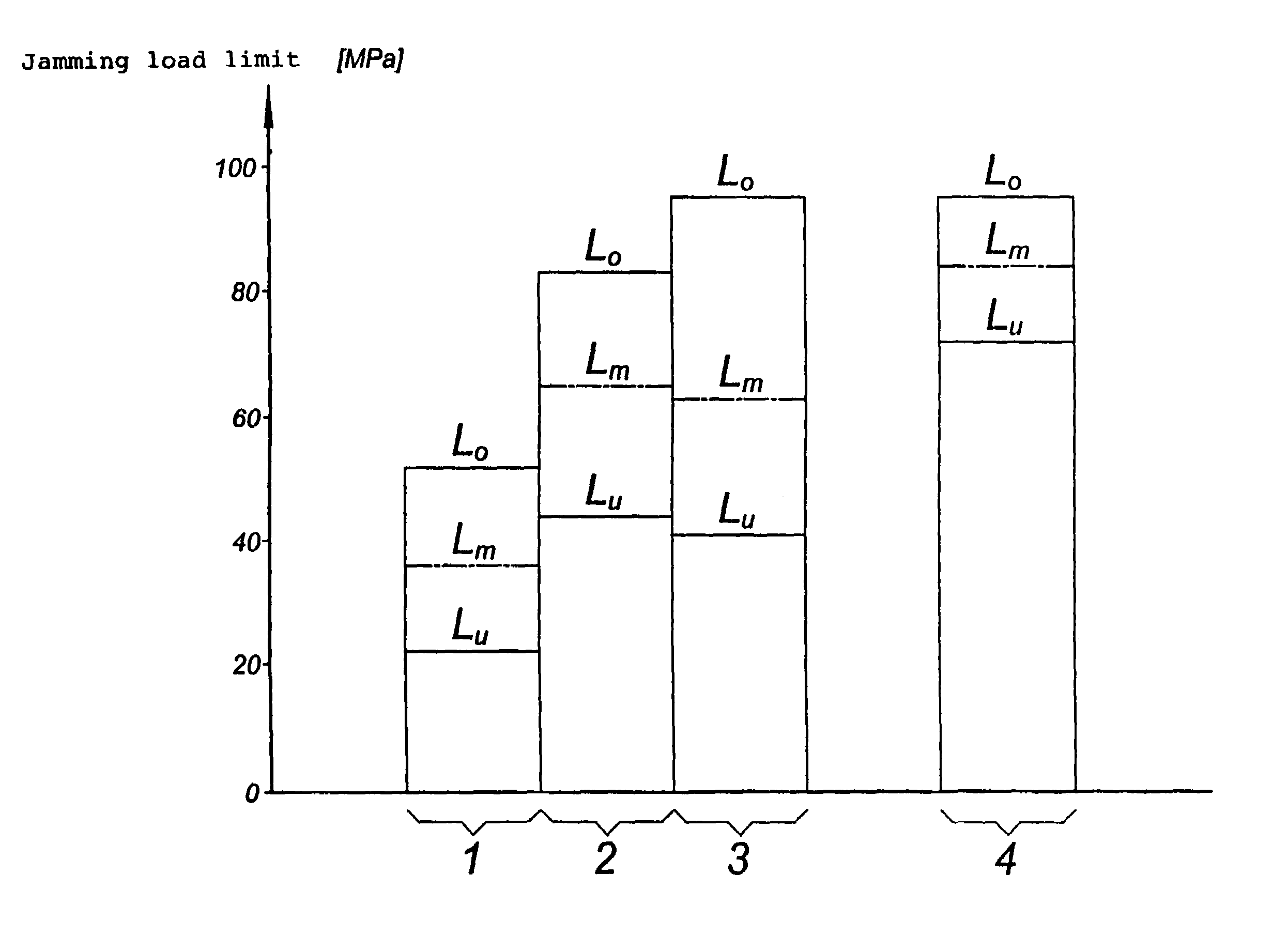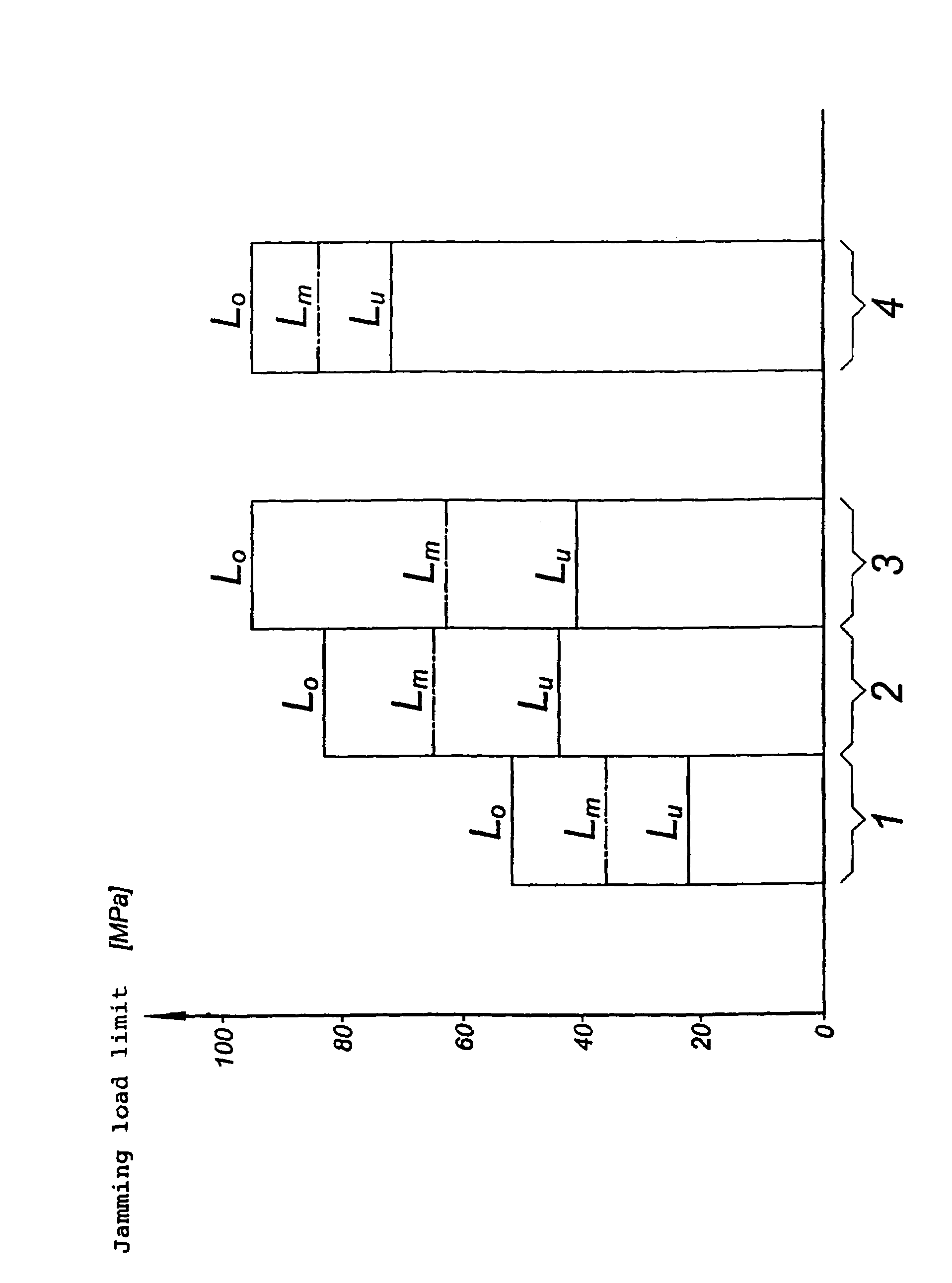Slide bearing
a technology of sliding bearings and sliding plates, applied in the direction of superimposed coating processes, soldering devices, manufacturing tools, etc., can solve the problems of running layers, increasing the average load limit, and still taking considerable wear and tear into account, so as to increase the average load limit for the occurrence of jamming, the effect of increasing the load requirement, and increasing the strain
- Summary
- Abstract
- Description
- Claims
- Application Information
AI Technical Summary
Benefits of technology
Problems solved by technology
Method used
Image
Examples
Embodiment Construction
[0009]A series of several slide bearings of the same design was subjected under comparable conditions to a static load which was increased gradually until the occurrence of jamming. The load limit measured during the occurrence of jamming in MPa was entered in the block diagrams for the bearing with the lowest and the highest jamming limit load of each series in combination with the average jamming limit load calculated for all slide bearings of this series.
[0010]The block diagram 1 for a slide bearing with bearing metal layer which is applied to a steel beam, forms the running surface per se and comprises 78% by weight of copper, 20% by weight of lead and 2% by weight of tin shows a jamming limit load Lu of 22 MPa for the slide bearing with the highest tendency toward jamming. The highest jamming limit load Lo was determined with 55 MPa, namely at an average jamming limit load Lm of 36 MPa. The tendency towards jamming was considerably reduced with an electrodeposited running layer...
PUM
| Property | Measurement | Unit |
|---|---|---|
| resilience | aaaaa | aaaaa |
| hardness | aaaaa | aaaaa |
| weight | aaaaa | aaaaa |
Abstract
Description
Claims
Application Information
 Login to View More
Login to View More - R&D
- Intellectual Property
- Life Sciences
- Materials
- Tech Scout
- Unparalleled Data Quality
- Higher Quality Content
- 60% Fewer Hallucinations
Browse by: Latest US Patents, China's latest patents, Technical Efficacy Thesaurus, Application Domain, Technology Topic, Popular Technical Reports.
© 2025 PatSnap. All rights reserved.Legal|Privacy policy|Modern Slavery Act Transparency Statement|Sitemap|About US| Contact US: help@patsnap.com


